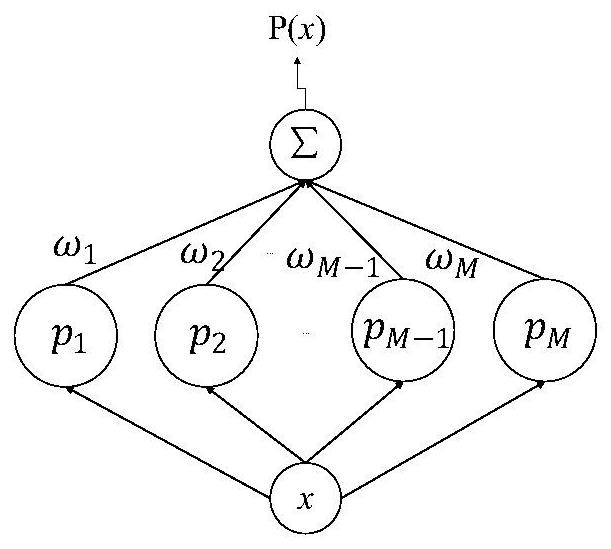Automatic recognition method of non-cooperative underwater targets based on Gaussian mixture model
A Gaussian mixture model, water target technology, applied in character and pattern recognition, instruments, computing and other directions, can solve problems such as poor practicability, reduce data volume, improve recognition performance and robustness, reduce label information and data volume the effect of the request
- Summary
- Abstract
- Description
- Claims
- Application Information
AI Technical Summary
Problems solved by technology
Method used
Image
Examples
Embodiment Construction
[0044] refer to Figure 1-4 .
[0045]The data set used in this example contains 3 types of underwater acoustic targets, 15 segments of sound are collected for each type, and the length of each segment of sound is about 6 seconds. The frequency is 8000Hz. During the test, class I and class II data are used as in-set data, and class III is used as out-of-set data. Select a part of the type I and type II data as the training set to train and build the GMM model, and the rest of the type I and type II data and type III data are used as the test set to test the trained GMM model.
[0046] The specific steps of the non-cooperative underwater target automatic recognition method based on the Gaussian mixture model of the present invention are as follows:
[0047] Step 1: Preprocessing the training samples observed in the data set, including three parts: pre-emphasis, framing, and windowing; the training samples are underwater acoustic target data.
[0048] Using MATLAB as the pla...
PUM
 Login to View More
Login to View More Abstract
Description
Claims
Application Information
 Login to View More
Login to View More - R&D
- Intellectual Property
- Life Sciences
- Materials
- Tech Scout
- Unparalleled Data Quality
- Higher Quality Content
- 60% Fewer Hallucinations
Browse by: Latest US Patents, China's latest patents, Technical Efficacy Thesaurus, Application Domain, Technology Topic, Popular Technical Reports.
© 2025 PatSnap. All rights reserved.Legal|Privacy policy|Modern Slavery Act Transparency Statement|Sitemap|About US| Contact US: help@patsnap.com



